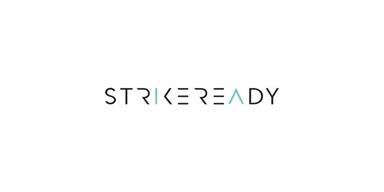6 Tips to Prevent Online Identity Theft and Fraud

In an increasingly digital world, the threat of identity theft looms larger than ever. Identity theft involves the malicious use of someone else's personal information to impersonate and often commit fraud in their name. This insidious crime can wreak havoc on a person's financial well-being and personal life.
As technology advances, so do the tactics of cybercriminals, making it crucial for individuals to stay informed and proactive about protecting their identities.
The Growing Threat of Identity Theft
While identity theft has been a concern for decades, it has gained alarming prominence recently. The digital age has ushered in unprecedented convenience and connectivity but has also opened doors for cybercriminals to exploit.
Our online presence, communications, and transactions mean that a significant portion of our data resides online, creating a tempting target for fraudsters.
These cybercriminals can use your stolen information for a range of malicious activities, including:
- Draining bank accounts or credit cards.
- Opening new accounts or lines of credit in your name.
- Applying for loans or utility services using your identity.
- Stealing superannuation, tax refunds, or other financial benefits earmarked for you.
- Passing on your insurance information to medical billing officers leads to false claims.
- Tapping into your emails to gather confidential information.
- Pretending to be you on social media, dating sites, or apps, potentially damaging your reputation and relationships.
Individuals must adopt proactive measures to safeguard their personal information to combat this growing menace.
Also Read, Multiple Agencies Hacked in a Broader Cyberattack: U.S Government
Protecting Yourself from Identity Theft
1. Use Strong and Unique Passwords
One of the most crucial steps in fortifying your online security is to create strong, unique passwords for every online account. Avoid using easily discoverable details like birthdates or common names.
Instead, craft complex passwords with uppercase and lowercase letters, numbers, and symbols. Password managers can help generate and securely store these passwords, reducing the need for memorization. Additionally, consider enabling two-factor authentication (2FA) whenever possible.
2. Beware of Phishing Scams
Phishing scams are a common avenue for online identity theft. These deceptive emails mimic trusted sources and aim to trick recipients into revealing sensitive information or downloading malware.
Always exercise caution when opening emails, especially those requesting personal data. Mark suspicious emails as spam and, when in doubt, contact the organization directly to verify the email's legitimacy.
3. Leverage Antivirus Software
Investing in robust antivirus software is a wise move to protect against identity theft. These programs offer multi-layered defense against various cyber threats.
Install antivirus software on all your devices, including laptops and smartphones, as online fraud knows no boundaries.
4. Monitor your Credit Reports and Financial Statements
Credit identity theft can significantly impact your financial health. Regularly review your credit reports from major bureaus like Equifax, Experian, and Million to stay vigilant.
Look for any unusual activities or unfamiliar accounts, and take immediate action if you detect unauthorized changes. Consider freezing your credit to prevent new credit lines from being opened without your consent. Monitoring your banking statements for unauthorized transactions is also vital.
5. Exercise Caution on Public Wi-Fi Networks
While public Wi-Fi networks provide convenient internet access, they need more security. Hackers can exploit these networks to access your data.
Use a Virtual Private Network (VPN) to encrypt your online activities and maintain anonymity whenever possible. Save sensitive transactions and activities for secure networks.
6. Limit Oversharing on Social Media
Social media platforms are a goldmine for identity thieves. Avoid oversharing personal information like your workplace, hometown, or email address, which can be used to answer security questions and gain access to your accounts. Review your privacy settings and limit public access to your profile.
What to Do If You're a Victim of Identity Fraud
Despite all precautions, identity theft can still happen. If you suspect your identity has been stolen, act promptly:
- Change your account passwords.
- Notify your bank or financial institutions immediately.
- Request a copy of your credit report and look for unauthorized activity.
- Lodge a notification through your country's cybersecurity authority.
- Seek advice and support from organizations specializing in identity theft assistance, like IDCARE.
In a digital age where personal information is currency, safeguarding your identity is paramount. By following these best practices, you can significantly reduce the risk of falling victim to identity theft and protect your online presence and financial well-being.
Stay vigilant and proactive in the face of this evolving threat to ensure your identity remains secure in the digital landscape.
Also Read, Tesla Confirms Insider Role in Data Breach Affecting 75,000 Employees
Business News
Splat App Transforms Photos Into Coloring Pages Using AI
U.S. Tech Giants Warn Visa-Holding Employees to Avoid International Travel Due to Processing Delays
Bring Your Own Device: Meaning and Financial Advantages
Making Weather Programmable: How Retrospective Climate Data Fits into Modern Tech Stacks
How Fashionphile Founder Built a Luxury Resale Empire from eBay to Millions




















